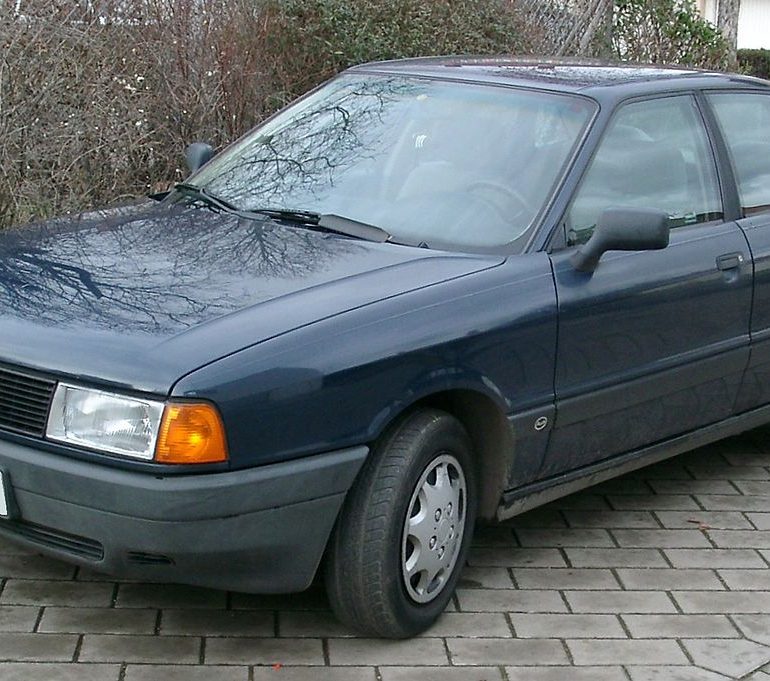Audi 80 (B3)
In September 1986, Audi released a new Typ 89 Audi 80 for the 1987 model year on the European market and introduced it elsewhere within a year. It was based on a new platform which broke the relationship with the Volkswagen B-series platforms, not being the same as the Passat’s B3 platform. Although often called the typ 89 even among knowledgeable Audi enthusiasts, the official and correct nomenclature was its production code Typ 89 from 1987 to 1989, and Typ 8A from 1990 onwards. It introduced a new aerodynamic look and a fully galvanised bodyshell. This was the first mid-sized car to feature a fully zinc-coated body, giving it longevity and durability against corrosion perforation. This protective shield proved to be so effective that Audi extended its corrosion perforation warranty from the originally offered ten years to twelve years (during early pre-production, the body was expected to be good for only eight years). Audi still uses zinc galvanisation for all current steel-bodied models.
Unlike its predecessor, the type 89 was marketed worldwide only as the Audi 80 or Audi 90. For the most part, Audi transferred existing powertrain concepts to the new model, although fuel injection was now available for some engines. A range of new petrol and diesel inline four-cylinder engines became available to European customers along with the procon-ten safety system which became standard fitment from 1991.
In 1987, the inline five-cylinder Audi 90 was reintroduced as an upmarket, more luxurious variant of the 80. The 90 differs visually by the full width tail-light panel; headlights which featured additional high-beam lights and a slightly different front grille. The most obvious visual difference between the 80 and 90 are the indicators, which are moved from beside the headlights to the bumpers next to the fog lights, which were standard fitment on the 90. From 1989 to 1991 the 90 also offered the first 20-valve engine from Audi since the turbocharged engine used in the Audi Sport Quattro. This engine produced 170 PS (130 kW; 170 bhp) and featured in the front wheel drive 20V, 20V Sport and four-wheel drive 20V quattro derivatives. The non-quattro 20V models were 120 kg lighter.
The United Kingdom and Europe had similar versions: the Volkswagen Group wanted to ensure consistency across all markets, so the trim levels were similar. However, in North America, the range was more limited: a choice of 2.3 E and 2.3 quattro were available from 1988 to 1992.
| Audi 80 typ 89 | |
| Overview | |
| Production |
1986–1991 1,623,382 built 80: 1,438,475 90: 184,907 |
| Designer | J Mays (1983) |
| Body and chassis | |
| Body style |
4-door saloon/sedan 3-door coupé (Audi Coupé) |
| Layout |
front engine, front-wheel drive or quattro permanent four-wheel drive |
| Platform | Volkswagen Group typ 89 platform |
| Powertrain | |
| Engine |
80: 1.4 L I4 1.6 L I4 1.8 L I4 2.0 L I4 2.0 L I4 16v 1.6 L I4 Diesel 1.6 L I4 Turbodiesel 1.9 L I4 Diesel 90: 2.0 L I5 2.2 L I5 2.3 L I5 2.3 L I5 20v 1.6 L I4 Turbodiesel |
| Transmission |
3-speed automatic, 5-speed manual |
| Dimensions | |
| Wheelbase | 2,540 mm (100.0 in) |
| Length | 4,404 mm (173.4 in) |
| Width | 1,695 mm (66.7 in) |
| Height | 1,397 mm (55.0 in) |
| Chronology | |
| Predecessor | Audi 80 (B2) |
| Successor | Audi 80 (B4) |




